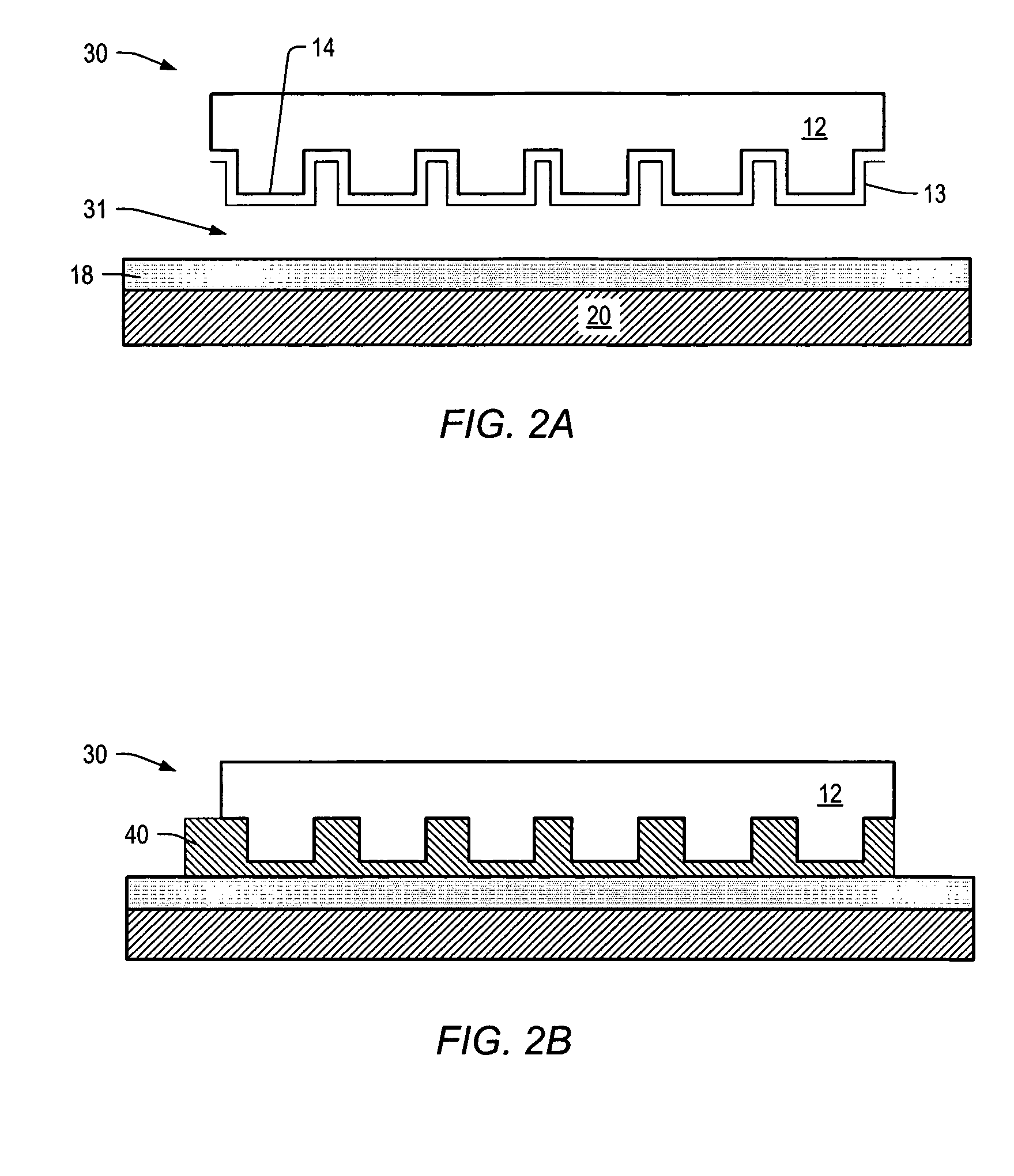Imprint lithography template having a feature size under 250 nm
a technology of feature size and template, applied in the field of imprint lithography templates, can solve the problems of system construction, many common materials may not be optically transparent, and methods are reaching their resolution limits,
- Summary
- Abstract
- Description
- Claims
- Application Information
AI Technical Summary
Benefits of technology
Problems solved by technology
Method used
Image
Examples
second embodiment
[0107]an X-Y translation stage is depicted in FIG. 17, and generally referenced by numeral 1700. To provide a similar range of motion to that of X-Y stage 1600, stage 1700 may have a foot print of about 29 inches by 29 inches and a height of about 15 inches (including a wafer chuck). Stages 1600 and 1700 differ mainly in that additional linkages 1701 are oriented vertically.
[0108]Both X-Y stage 1600 and X-Y stage 1700 are flexure based systems. Flexures are widely used in precision machines since they may offer frictionless, particle-free and low maintenance operation. Flexures may also provide extremely high resolution. Examples of flexure based systems are disclosed in U.S. Pat. No. 4,694,703 to Routson and U.S. Pat. No. 4,062,600 to Wyse both of which are incorporated by reference as if full set forth herein. However, most flexure based systems may possess limited ranges of motion (e.g., sub mm range of motion). Embodiments disclosed herein may have a range of motion of more than...
third embodiment
[0142]In a third embodiment, overlay marks may be formed of a different material than the template. For example, a material selected to form the template overlay marks may be substantially opaque to analyzing light (e.g., visible light), but transparent to activating light used as the curing agent (e.g., UV light). For example, SiOX where X is less than 2 may form such a material. In particular, it is believed that structures formed of SiOX where X is about 1.5 may be substantially opaque to visible light, but transparent to UV light.
[0143]FIG. 32, depicts an assembly of a system, denoted generally as 100, for calibrating and orienting a template, such as template 12, about a substrate to be imprinted, such as substrate 20. System 100 may be utilized in a machine, such as a stepper, for mass fabrication of devices in a production environment using imprint lithography processes as described herein. As shown, system 100 may be mounted to a top frame 110 which may provide support for a...
PUM
| Property | Measurement | Unit |
|---|---|---|
| distance | aaaaa | aaaaa |
| depth | aaaaa | aaaaa |
| wavelengths | aaaaa | aaaaa |
Abstract
Description
Claims
Application Information
 Login to View More
Login to View More - R&D
- Intellectual Property
- Life Sciences
- Materials
- Tech Scout
- Unparalleled Data Quality
- Higher Quality Content
- 60% Fewer Hallucinations
Browse by: Latest US Patents, China's latest patents, Technical Efficacy Thesaurus, Application Domain, Technology Topic, Popular Technical Reports.
© 2025 PatSnap. All rights reserved.Legal|Privacy policy|Modern Slavery Act Transparency Statement|Sitemap|About US| Contact US: help@patsnap.com



